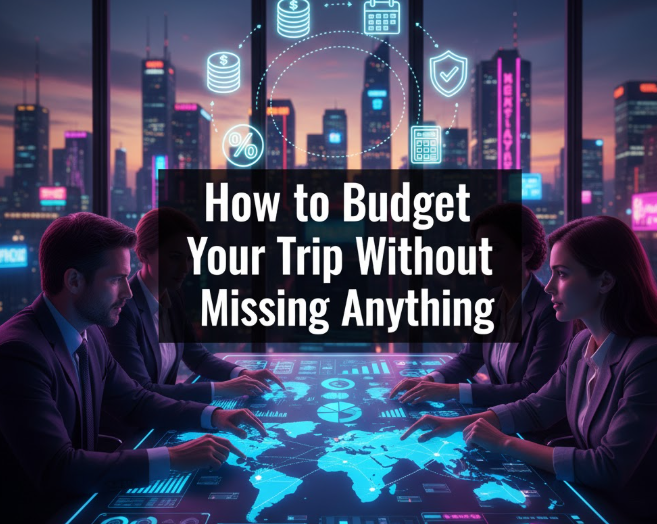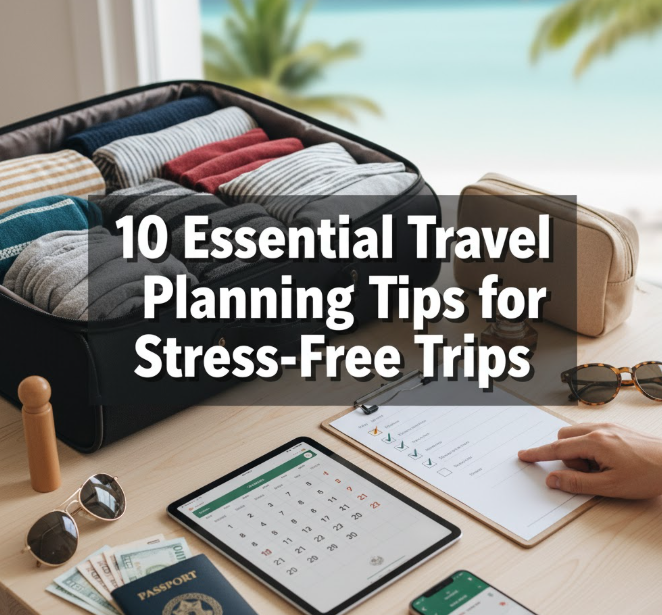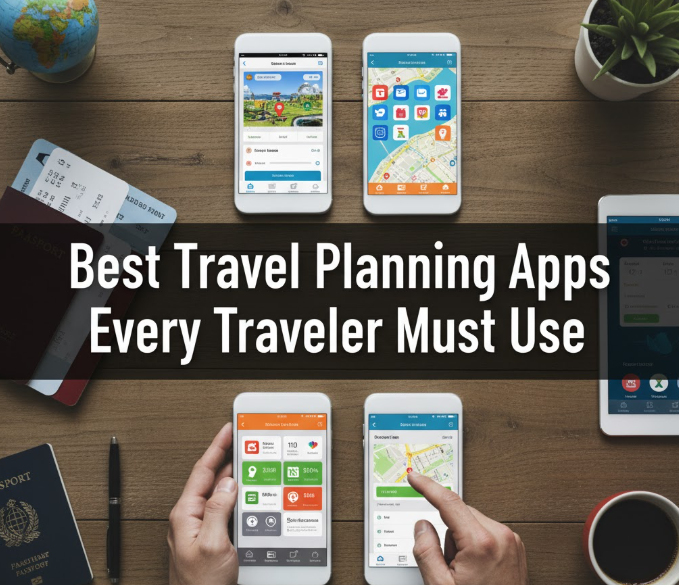It’s meant to be a fun part of the process, not a stressful one. But if you’re stressing about money, it can be difficult to enjoy the process of planning as well. The good news? You don’t need a giant bank account to visit any of the places you’re an airliner away from visiting. All you need is a good plan that can allow you to spend smart and get what you want anyway.
Too many people make the same mistake: They either burn half their budget in the first few days or penny-pinch so seriously that they miss the best parts of their trip. This post is going to teach you exactly how to budget for everything that matters, and not end the month with more month than money.
Whether you’re planning to head off on a beach vacation, explore another city or hit the slopes for thrills in the snow, these simple tips will help you keep cash in your pocket while making moments that will last.
Start With the Big Picture
Before you delve into specifics, first determine how much you have to work with. This doesn’t mean you shouldn’t indulge at all, it simply means that you can spend some money on memorable excursions without coming home to stress out over credit card bills.
Figure Out Your Total Budget
Pull up a chair and face your finances squarely. How much cash can you afford to allocate to a trip like this without getting yourself in a bind? Consider:
- What you have left from your income after bills and basics
- But what about the money you’ve already saved for travel?
- How long you have to save further before your trip
- Emergency money to keep separate
A rough guideline: If spending this money would make you worried about covering rent or buying groceries, you’ll need to save up a little more first. Travel is supposed to bring joy to your life, not financial difficulty.
Pick Your Destination Wisely
The most significant factor affecting your budget is where you go. A weekend in Bali is not the same as a weekend in New York City, no siree. Look up what it costs to live per day in places you’re considering:
| Destination Type | Estimated Daily Budget (Per Person) | Best Suited For |
|---|---|---|
| Southeast Asia | $30-50 | Budget travellers, long term travel |
| Eastern Europe | $50-80 | Culture vultures, affordable cities |
| Western Europe | $100-150 | Historic sites, art, food |
| North America | $80-120 | Road trips, national parks |
| Australia/New Zealand | $100-180 | Nature, adventure activities |
These figures are all for accommodation, food, local transport and activities. International flights are separate.
Break Down Every Expense
Now comes the detailed work. By breaking your budget down into categories, you are able to see exactly where your money is going and where you can save without sacrificing experiences.
Transportation Costs
Experiencing it, getting there and getting around usually account for the biggest chunk of your budget.
Flights or Main Transport:
- Book 2-3 months in advance for the best deals
- Use comparison websites, but also check airline sites directly
- Fly mid-week (Tuesdays and Wednesdays are usually the least expensive)
- See alternate airports — often way cheaper
- Budget carriers can save you hundreds — but beware the baggage charges
Local Transportation:
- Look into public transport passes at your destination
- Estimate whether a rental car works for your plans
- Don’t forget to add the costs of gas, parking and tolls if you’re driving
- Apps like Uber or an equivalent local service for the odd ride
- It’s free to walk and find those hidden gems
For more tips on finding affordable flights, visit https://calltoflights.com.
Accommodation Strategy
Where you sleep will impact your budget as well as experience so choose wisely.
Finding the Sweet Spot:
Thrifty travelers can score big when mixing types of accommodations. You might splurge on a nice hotel for two nights, then switch to a decent hostel or an Airbnb. This way you get comfort and savings both.
Smart Booking Tips:
- Hotels at tourist attractions are priced higher — stay a bus ride away
- Obsessively vet reviews so that you don’t arrive to any unwelcome surprises
- Book rooms that are refundable, for the greatest flexibility possible
- Seek out free breakfast establishments (saves you $10-15 per day)
- Opt for apartments with kitchens for longer stays
Food and Drinks Budget
Food is where a lot of travelers either blow their budget or lose out. You need a balanced approach.
The 50-30-20 Food Rule:
Here is how to divide your food budget:
- 50% on local restaurants and real experiences
- 30% on casual meals and street food
- 20% for groceries and snacks
That way, you can enjoy the treat of eating something special without consuming packaged noodles every single night.
Money-Saving Food Hacks:
- Enjoy your large meal at lunch, when restaurants have specials
- Always get water bottles at a supermarket – never the tourist shops
- Eat street food — and miss nothing. It’s delicious and cheap
- Breakfast at your hotel if including the package
- Take snacks everywhere between meals
Activities and Attractions
That is what you’re here for, so don’t skimp in this category — but be smart.
Free and Cheap Experiences:
All places have their extraordinary free offerings:
- Walking tours (tip-based, usually $5-10)
- Public beaches, parks and hiking paths
- Free museum days (research ahead)
- Local festivals and street markets
- Sunset watching from viewpoints
Paid Attractions Worth It:
Find the highest rated activities and determine which ones are most important to you. It could be something like that cooking class or boat tour that costs $50 but ends up being the highlight of your trip. Budget around your “must-do” list, and be flexible about everything else.
City Passes and Combo Tickets:
Most cities have some form of tourist card that bundles up various attractions and transport. Run the numbers: They save money some of the time, but not always. Only purchase if you plan to use what’s inside.
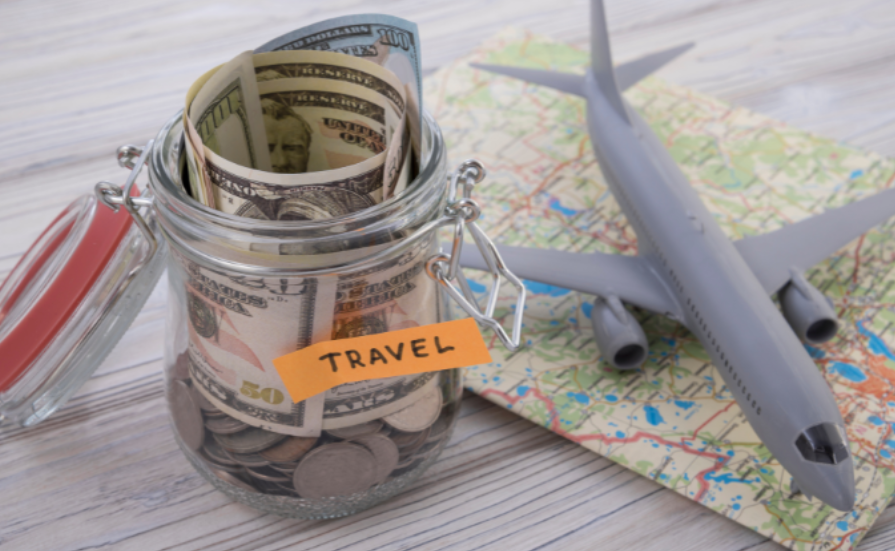
Create Your Daily Spending Plan
Now that you have all of your costs, make a daily budget that will keep you in tune with costs but not under constant strain.
Sample Budget Breakdown
Here is a hypothetical $100 daily budget:
| Category | Spending Amount | Notes |
|---|---|---|
| Accommodation | $35 | Mid-range hostel or budget hotel |
| Breakfast | $5 | Either includes breakfast or cheap breakfast café |
| Lunch | $12 | Local restaurant |
| Dinner | $20 | Good meal out, or dinner and drinks |
| Activities | $15 | One paid activity, split cost |
| Transport | $8 | Public transport or fuel |
| Miscellaneous | $5 | Souvenirs, unexpected purchases |
You can scale these numbers based on the cost of your destination and what is important to you.
The Buffer Zone
Add 15-20% to your budget for unanticipated expenses. Things happen:
- Attractions more expensive than websites stated
- You find a perfect souvenir
- You can’t control the weather and you need alternate plans
- You are asked to do weird new things
This buffer is the opportunity-maker.
Money-Saving Strategies That Actually Work
These real-world tips help you stretch your budget a healthy, not cheap, amount.
Book Smart, Not Just Cheap
- Compare prices on multiple platforms
- Read cancellation policies carefully
- Book flexible options if you think your plans might change
- Get price alerts on flights
- Sign up for the loyalty program even if you’re only taking a single trip
Travel During Off-Peak Times
Shoulder season (between high and off-season) is the best of both worlds:
- Lower prices on everything
- Fewer crowds at popular spots
- Better weather than deep off-season
- More authentic local experiences
For comprehensive travel planning resources, check out Lonely Planet’s budget travel guide.
Use Technology to Your Advantage
Essential Money-Saving Apps:
- Google Maps: Download offline maps to avoid data roaming costs
- XE Currency: Keep an eye on exchange rates and do fast price conversions
- Trail Wallet: Track daily expenses to avoid going over budget
- Rome2rio: Find the best way to get from A to B
- Too Good To Go: Save money on leftovers from restaurants
Pack Strategically to Sidestep Additional Charges
Take stuff to avoid buying on a whim:
- Reusable water bottle with filter
- Simple first-aid items & over-the-counter meds
- Phone charger and portable battery
- Snacks for travel days
- Universal adapter for electronics
Keep an Eye on What You’re Spending Without Driving Yourself Crazy
You do need expense tracking, but obsessive tracking of every transaction just isn’t fun.
Simple Daily Check-In
Here’s what to do each evening:
- Sum all you spent on that day
- How does it compare to your daily allowance
- Adjust tomorrow’s spending if needed
- Be proud of that smart money decision
Use the Envelope System (Online or Offline)
Separate your travels into time frames and budget a specific amount for each. If the envelope is empty, you stop spending. This way you won’t blow all your budget in the first days!
When to Splurge
Budget travel doesn’t always or entirely mean saying no to everything. Splurge on experiences that:
- Only occur at that exact place
- Create once-in-a-lifetime memories
- Your hobbies and passions can also be matched by you
- You’re gonna wanna be there when you get home
When Bad Things Happen, How Should We Think?
Even perfect planning hits bumps. Here’s how to manage budget woes while on the road.
Minor Budget Overages
And if you have an extra $20 to work with:
- Bypass paid sights for a day or two
- Cooking at home. Avoid eating out as cooking your meal is always a cheaper alternative
- Choose walking over paid transport
- Find free entertainment options
Serious Budget Problems
If you’re seriously overspending:
- Trim your trip a little (and debt is worse)
- Move to cheaper accommodation immediately
- Eliminate all non-essential purchases
- Get in touch with your bank for emergency cash
Emergency Fund Protocol
Set aside emergency cash, outside your regular budget:
- Minimum $200-300 accessible
- Different location than main money
- Covers medical situations, theft, or immediate travel accommodations
- Only touch in real emergencies
Eking Your Money Out for the Entire Trip
The last days of your trip should be as enjoyable as the first ones.
Front-Load or Back-Load Your Spending?
Two approaches work:
- Front-loading: Spend more early and get established, then ease off
- Back-load: Come in conservative, splurge later
Choose based on your personality. It’s about having a plan, not about hoping money magically shows up.
Last-Minute Budget Stretching
Running low on funds? Try these:
- Revisit the free stuff you didn’t do
- Picnic lunches in gorgeous location
- Use facilities from the hotel (pool, gym, common areas)
- Take pleasure in the simple things like coffee with a view
Bringing It All Together
Budgeting your travel does not equate cutting out the fun – it means, purposefully planning for maximum experiences with the cash you have in hand. And when you know what you can afford and where your money is going, you relax and have more fun.
The perfect budget is personal. A backpacker on a temple tour has different requirements than a couple anniversary-celebrating. Your budget should be a reflection of your values, the way you travel and what is financially realistic for you.
Begin with honest numbers. Break down every category. Include flexibility. And track your spending without obsessing. Above all, keep in mind that the best travel memories are often free — think sunsets, chats with locals, wandering off into unknown neighborhoods and a taste of different ways of living.
Your dream trip is indeed possible with the money you have right now. All you need to do is plan it properly, spend it wisely and favor experiences over costly possessions. Those skills are the ones that every traveler I know who appears to go everywhere and do everything on the cheap acquired. Now it’s your turn.
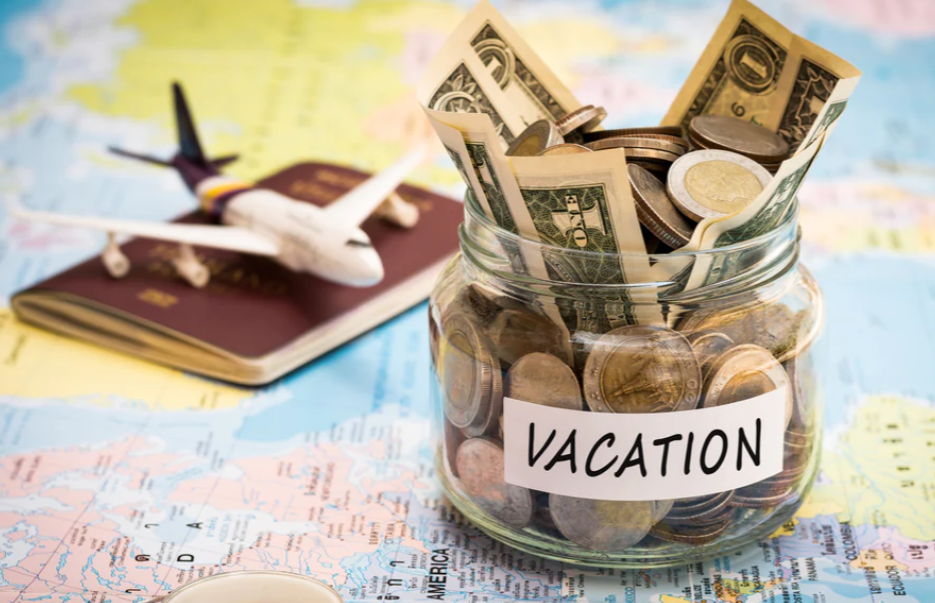
Frequently Asked Questions
How much do I need to allocate for a one-week long trip?
It all depends where you are going. For less-expensive destinations such as Southeast Asia or Central America, $500 to 700 per person might do the trick. For pricier locales such as Western Europe or Australia, budget $1,200-2,000 per person and up. Always check the costs for your specific destination and add 20% as a cushion.
Should I use cash or card for my travels?
Use both. Cards have better rates and fraud protection, but many mom-and-pop shops only accept cash. Bring a credit card with no foreign transaction fees, a backup card carried separately and enough cash to cover two or three days of small purchases. Use ATMs to withdraw more, but incur less fees.
How can I save on food without skimping out on local eats?
Abide by the 50-30-20 rule: spend 50% on real local restaurants, 30% on less-formal street food and cafes, and 20% on groceries for breakfasts and snacks. This way you get to experience food culture without breaking the bank. And eat your big meal at lunch, when prices are lower.
How much from my travel budget should I spend on accommodations?
You also spend about 30-40% of your budget on place to sleep. But this depends on what you value most. 20-25% of what a budget traveler spends staying in hostels, and perhaps 50% for luxury travelers. It’s all about finding a balance between being comfortable and making room for the other things that are important to you — whether that’s your activities, social life or food.
How do I deal with budget emergencies while traveling?
Make sure you always have about $200-300 cash in case of an emergency over and above your daily budget. Whatever happens have at least two ways of getting to money (different cards, online banking). Purchase travel insurance before your trip to protect yourself against big emergencies. If you go over budget, trim back on paid activities and pricey meals in advance of cutting a day or two from your trip.
Should you buy a city tourism pass?
If you’ll actually use what’s included, that is. Add up the cost of several attractions you plan to visit and compare it with the price of a pass. Tourist passes are worth it if you’re hitting up a lot of paid attractions at once, but they are not worth the money otherwise.
How much money should I set aside for souvenirs and shopping?
Put back 5-10% of your total budget for shopping, or $5-10 per day on a moderate budget. Determine in advance how important souvenirs are to you. If shopping doesn’t matter, use that money for experiences. Wait until the very end of your travels to buy a majority of souvenirs so you know what wallet room you have left.
Can I travel on $50 a day?
Yes, in many destinations. You can easily and comfortably travel parts of Southeast Asia, Eastern Europe, Central America, or even India on $40-60 per day. That means staying in budget accommodation, eating only local food, using public transportation and doing all free or cheap experiences! You’ll want a minimum of $100-150 per day in pricier destinations like Scandinavia or Japan.


